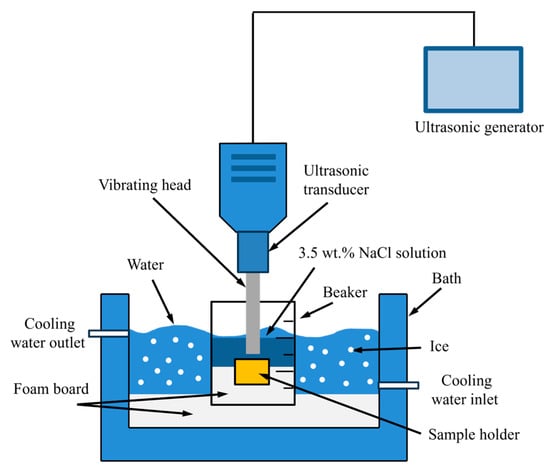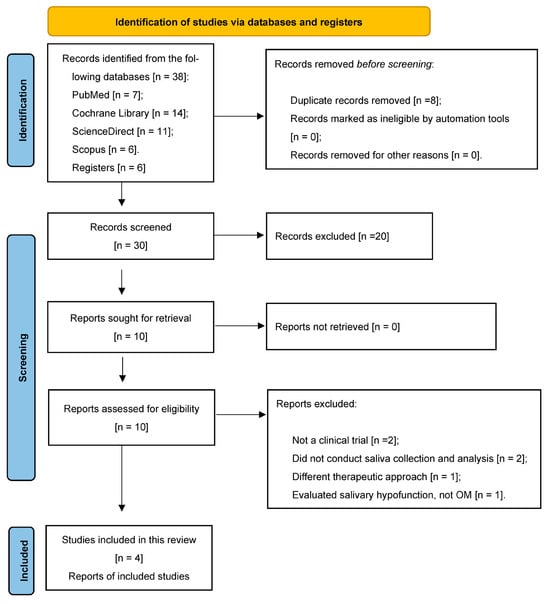Background: Canine coronavirus (CCoV), canine rotavirus (CRV), canine parvovirus (CPV), and canine distemper virus (CDV) cause gastroenteritis in dogs, and co-infections of these pathogens are common in China. In particular, CCoV and CRV are confirmed to have important zoonotic potential and cause public
[...] Read more.
Background: Canine coronavirus (CCoV), canine rotavirus (CRV), canine parvovirus (CPV), and canine distemper virus (CDV) cause gastroenteritis in dogs, and co-infections of these pathogens are common in China. In particular, CCoV and CRV are confirmed to have important zoonotic potential and cause public health issues. It is difficult to diagnose these diseases based only on clinical manifestations and pathological damage. Methods: In this study, four pairs of specific primers and probes targeting the CCoV M, CRV VP7, CPV VP2, and CDV N genes were designed. The reaction conditions, including the primer and probe concentrations, annealing temperatures, and reaction cycles, were optimized for the development of a quadruplex RT-qPCR for the detection of CCoV, CRV, CPV, and CDV. The assay was used to test 1028 clinical samples to validate its application. Results: A quadruplex RT-qPCR was successfully established for the differential detection of CCoV, CRV, CPV, and CDV, with good specificity, high sensitivity, and excellent repeatability. The assay could specifically detect CCoV, CRV, CPV, and CDV without cross-reactivity with the other canine viruses tested. It showed high sensitivity with limits of detection (LOD) of 1.1 × 10
2 copies/reaction for all four plasmid constructs. It showed excellent repeatability, with 0.05–0.90% intra-assay variation and 0.02–0.94% inter-assay variation. The 1028 clinical samples were tested using the quadruplex RT-qPCR and a reported reference RT-qPCR. The positivity rates of CCoV, CRV, CPV, and CDV were 9.53%, 0.97%, 25.68%, and 5.06% using the developed assay, and 9.05%, 0.88%, 25.68%, and 4.86% using the reference assay, with agreements higher than 99.32%. Conclusion: The results indicated that a rapid and accurate quadruplex RT-qPCR was developed for the detection and differentiation of CCoV, CRV, CPV, and CDV.
Full article
 IJMS
IMPACT
IJMS
IMPACT Applied Sciences
IMPACT
Applied Sciences
IMPACT Sustainability
IMPACT
Sustainability
IMPACT Sensors
IMPACT
Sensors
IMPACT JCM
IMPACT
JCM
IMPACT Materials
IMPACT
Materials
IMPACT Molecules
IMPACT
Molecules
IMPACT Energies
IMPACT
Energies
IMPACT Electronics
IMPACT
Electronics
IMPACT Remote Sensing
IMPACT
Remote Sensing
IMPACT Cancers
IMPACT
Cancers
IMPACT Nutrients
IMPACT
Nutrients
IMPACT Mathematics
IMPACT
Mathematics
IMPACT Foods
IMPACT
Foods
IMPACT Buildings
IMPACT
Buildings
IMPACT Polymers
IMPACT
Polymers
IMPACT Animals
IMPACT
Animals
IMPACT Water
IMPACT
Water
IMPACT Plants
IMPACT
Plants
IMPACT Agronomy
IMPACT
Agronomy
IMPACT Biomedicines
IMPACT
Biomedicines
IMPACT Processes
IMPACT
Processes
IMPACT Microorganisms
IMPACT
Microorganisms
IMPACT Diagnostics
IMPACT
Diagnostics
IMPACT Nanomaterials
IMPACT
Nanomaterials
IMPACT Viruses
IMPACT
Viruses
IMPACT Medicina
IMPACT
Medicina
IMPACT Healthcare
IMPACT
Healthcare
IMPACT Cells
IMPACT
Cells
IMPACT Forests
IMPACT
Forests
IMPACT Agriculture
IMPACT
Agriculture
IMPACT Land
IMPACT
Land
IMPACT JMSE
IMPACT
JMSE
IMPACT IJERPH
IJERPH
 Symmetry
IMPACT
Symmetry
IMPACT Genes
IMPACT
Genes
IMPACT Pharmaceutics
IMPACT
Pharmaceutics
IMPACT Coatings
IMPACT
Coatings
IMPACT Micromachines
IMPACT
Micromachines
IMPACT Pharmaceuticals
IMPACT
Pharmaceuticals
IMPACT Atmosphere
IMPACT
Atmosphere
IMPACT Children
IMPACT
Children
IMPACT Religions
IMPACT
Religions
IMPACT Antioxidants
IMPACT
Antioxidants
IMPACT Life
IMPACT
Life
IMPACT Metals
IMPACT
Metals
IMPACT Biomolecules
IMPACT
Biomolecules
IMPACT Vaccines
IMPACT
Vaccines
IMPACT Education Sciences
IMPACT
Education Sciences
IMPACT Minerals
IMPACT
Minerals
IMPACT Horticulturae
IMPACT
Horticulturae
IMPACT Brain Sciences
IMPACT
Brain Sciences
IMPACT JPM
IMPACT
JPM
IMPACT Bioengineering
IMPACT
Bioengineering
IMPACT


















